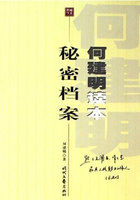Vonnegut Revisited:In an Ecological Context
American Modern Environmental Movement
Kurt Vonnegut's route to fame and fortune coincided with one of the most tumultuous eras in the American history。 He was born in the post-WWⅠera, came to age during the Great Depression, fought and became POW in the Second World War, and rose to popularity as a writer during the Vietnam War, the Civil Rights Movement, Women’s Liberation Movement, the Counter-culture Movement, and other political and social upheavals of the 1960s and 1970s。Whereas much attention has been directed to the correlation between Vonnegut’s literary works and the times he wrote against, little signifcance has been attached to the infuence of the Environmental Movement—another concurrent event in his career。It was during the same era that a great number of environmental organizations came into being, important works about environmental protection were published, and environmental laws and legal acts were issued。There was, indeed, amidst the uproar of anti-war protests, countercultural activities, and civil rights demonstrations, a growing concern among the public for the destructive effects of industrialism and consumerism on nature and the human living conditions。
The Environmental Movement had an influence on Kurt Vonnegut。 Many environmental issues found expression in Vonnegut's writing, both in his fiction and nonfiction writings, such as air and water pollution, the extinction of species, the danger of unbridled use of science and technology, overpopulation, and the debate over the moral standing of animals。As a matter of fact, there runs in Vonnegut's writing a constant concern for the environment and the welfare of other species。Critique of science and technology is the bedrock of his politics;the planetary point of view that science-fction narrative modes create enables sober refections on the follies of humanity, and the urge to break down prejudicial boundaries, racial, sexual, class, and inter-species, constitutes a major momentum for his artistic creation。In a word, Vonnegut is a writer of much stronger ecological consciousness than most scholars have acknowledged。This ecological consciousness, as demonstrated in his readiness to address the ecological issues in his fction, marks the special quality of his humanism, one that transcends the boundary of humanity。
Therefore, a look at the Environmental Movement as the social and cultural context and a review of Vonnegut's life and influences from the ecological perspective are necessary for a fuller understanding of the author's philosophy。
Environmental thinking has a tradition in America that can be traced back to the 19th-century Romantic Movement。 Henry David Thoreau and John Muir are generally regarded as precursors of the modern environmental movement。Their ideas about wilderness and conservation have infuenced generations of Americans。Thoreau's declaration that“in wildness is the preservation of the world”has been esteemed as one of the earliest expressions of wisdom in conservation, whereas the Sierra Clubthat Muir founded in 1892 continued long after his death to take the lead in social protests against economic and industrial projects that might destroy the natural environment。
Nevertheless, it was not until after 1945 that environmentalism became a nation-wide social movement(Stoll 2)。 Two events took place in 1945 that changed the course of human history。On July 16,a six-kilogram sphere of plutonium exploded over the New Mexico desert with a force equal to 20,000 tons of dynamite。Its effects were felt twenty miles from the test site。Soon after, on August 6 and 9,the United States dropped two nuclear bombs on the Japanese cities of Hiroshima and Nagasaki, killing 105,000 people and injuring much more。The horrifying devastation of lives of human beings as well of animals and plants awakened people to the realization of the extent of the destruction that technological warfare could bring about。They became also aware how closely lives of human beings were connected with those of other creatures on earth。A new human-nature relationship based on the understanding of interconnectedness began to take shape。Its range of infuence was expanded as well。Instead of being limited to a small number of thinkers and activists as in the past, environmental issues such as water and air pollution and other harmful side-effects of industrialism became common worries of the general public。
A。 Environmental Concepts, Events, Books, and Laws
During the half century following these events, environmentalism emerged in the United States as both a philosophy and a political movement。 The belief was widely shared that industrial production and its consequent patterns of consumption created ecological instability that put the viability of modern society at stake。Environmentalists demanded redressing the tendency of industrial economies to waste resources, chemically poison people and landscapes, consume space in the countryside, create garbage, and increase population。They also sought toredefne human society as a subset of the global environment instead of a rivalry and conqueror of the environment。Environmentalists believed that progress did not lie in the increasing wealth or industrial development, but in the knowledge and understanding of how human beings could live in harmony with other species of the biological community。The human-nature relation became ethical relations, and central environmental themes such as biological diversity, natural beauty, and sustainability came to represent an alternative vision of economics and the human good(Stoll 5)。
The emergence of ecology as a science in the 1960s provided necessary data for environmentalists to understand whether and how economic growth strained the earth's life-support systems and its agricultural capacity。 More importantly, with an emphasis on the biological interdependence and interconnectedness within the ecosystem, ecology helped bring to light the dependence on the one hand and destruction on the other of human activity on the natural environment, which industrialism tried to obscure。People became more aware of the consequences economic development had on actual landscapes。An environmental movement began to take shape and gather forces。
In the 1960s, protests over America's involvement in the Vietnam War quickly absorbed other issues and became a critique of American life and politics, including attitudes toward and uses of the environment。 Student movements formed to protest abuses of the environment in the same way that they had formed to resist the war。Politicians, including President John F。Kennedy and New York Mayor Lyndon Johnson, made statements against air and water pollution, so did the League of Women Voters and other women's organizations。There was a general criticism of industrial production and the prevalence of consumerism。Many people believed that industrial society“consumed prodigiously, expanded recklessly, and alienated people from nature”(Stoll 12)。With nuclear war as a very real possibility, it seemed that technological civilization would annihilate itself。From within this social climate, a vast array of interests coalesced as a movement that formed a subset within the counterculture of the 1960s。
A number of events and publications marked the emergence of the Environmental Movement during the mid-and-late-20th century。 In 1954,under the leadership of the Sierra Club, public opinions succeeded in preventing the Bureau of Reclamation from building a dam that would flood Dinosaur National Monument。This was an important victory of environmentalists in their fght against the pursuit of economic growth at the cost of natural environment。
In 1969,two events awakened the American people to the vulnerability of the world around them。 In January and February 1969,an estimated 80,000 to 100,000 barrels of crude oil spilled from a major oil field into the Santa Barbara Channel in Southern California, near Santa Barbara city, fouling long miles of coastline and killing thousands of sea birds and marine animals such as dolphins, elephant seals, and sea lions。On June 22,1969,the Cuyahoga River, a seriously polluted river near the industrial city Cleveland, Ohio, caught fire due to the serious water pollution and heavy accumulation of oil-and-chemical-soaked debris on the river。The fre was estimated to have reached heights of over fve stories of buildings and lasted between twenty and thirty minutes。Although this was not the most severe fre on the river, the biggest one having occurred in 1952 which caused over$1.3 million in damage, it received the most prominent media coverage and caught massive public attention, which demonstrated the increasing eco-awareness of the general public。In Breakfast of Champions(1972),Vonnegut has his protagonist refer to this astounding event, which gives the book a note of immediate social criticism and foregrounds the theme of environmental concerns in the book。The oil spill and the fre on the river generated vehement public outrage and led to the passage of a number of environmental laws within the following years, which formed the legal and regulatory framework for the modernEnvironmental Movement in America。
On April 22,1970,the frst Earth Day was inaugurated in America, advocated by Senator Gaylord Nelson, who called for an environmental teach-in in the model of campus teach-ins protesting the war in Vietnam。 Nelson's idea of a decentralized, grassroots effort in which each community shaped its action around local concerns as opposed to the usual top-down approach had attracted enormous support from the general public。Twenty million people assembled in hundreds of communities across the country to participate in the demonstration。They threw big earth balls, listened to speeches from mayors and ministers, and sang songs。For the first time, environmentalism assumed the power of a mass movement and became part of the social movement that marked the 1960s and 1970s。As Nelson proclaimed while addressing the audience in Denver, the goal was“not just an environment of clean air and water and scenic beauty。The objective is an environment of decency, quality and mutual respect for all other human beings and all living creatures”。In this way, the Environmental Movement entered into alliance with the Women's Liberation Movement, Civil Rights Movement and other social justice movements that had high on their agenda the struggle for the right of discriminated groups。Signifcantly, Vonnegut was among the speakers on the inauguration of the frst Earth Day in New York。Although he did not appear to be enthusiastic about the possible effect of the environmental movement, calling it a“big, soppy pillow”,he was sure in support of the movement's awareness-raising goals。
A series of important books were published during this period, lending intellectual force to the movement。 The books were written by ecologists, biologists, geologists, social scientists, and anthropologists, and the issues and concepts they raised were to become the central thinking of the movement。In 1948,Fairfeld Osborn's Our Plundered Planet and William Vogt's Road to Survival came out, making perceptive examination on the increasing impact of humanity on the environment from a global perspective。Vogt, for example, believed that American free enterprise was deeply flawed and should be responsible for“devastating forests, vanishing wildlife, crippled ranges, a gullied continent, and roaring food crests”(qtd。in Opie 405)。The next year, Aldo Leopold published A Sand County Almanac(1949),a book that was to become an important part of the intellectual foundation of modern environmentalism。In the book, Leopold put forward the famous“land ethic”and proposed the concept of biological community in which the role of humans turned from conquest to equal citizenship。
The most extensive and profound infuence came from Silent Spring(1962)by Rachel Carson, marine biologist and ecologist。Unlike earlier books about conservation and wilderness protection, Silent Spring painted the picture of the common landscapes of America, insisting that the danger of the environment existed not in remote places, but in the gardens, lawns, and neighborhoods of average Americans。Using her expertise in ecology, Carson showed the public that the danger of chemical pesticides, particularly that of DDT, did not reside only in pests, but also in humans, wildlife, soil, food, and water。As Steven Stoll points out, Carson stunned the nation with a revelation that“consumption in industrial society could erode the very fabric of life”(16)。The book greatly raised the public awareness of the environmental pollution and its connection with the public health, which added enormous impetus for the environmental movement。Therefore, the book is universally regarded as the generator of the modern American Environmental Movement。Many regard the publication of the book in 1962 as the starting point of the movement。
Also published during the mid-and-late-20th century was Paul Ehrlich's ThePopulation Bomb(1966),Barry Commoner's The Closing Circle:Nature, Man, and Technology(1971),Donella H。 Meadows and Dennis Measows'Limits to Growth(1972),and James Lovelock's Gaia:A New Look at Life on Earth(1979)。These books dealt with the environmental issues from different perspectives and approaches, but they shared a common concern of the environmental crisis, that is, the natural world around us is not always static, passive, objective, and everlasting, that what we are doing have an effect on it and will be reacted upon by it as well, and that the modern development of the human society is destructively transforming the environment, the effect of which will in return harm ourselves。Together, these writings formed the intellectual foundations of American environmentalism and helped model popular opinions, thus enormously boosted the progress of the environmental movement。
Numerous environmental laws and legal acts were passed in the milieu of the movement。 In 1955,Congress passed the Air Pollution Control Act, which ushered in a series of clean-air legislation。In 1963,one year after the publication of Silent Spring, the frst Clean Air Act was passed,“to improve, strengthen, and accelerate programs for the prevention and abatement of air pollution”(Stoll 156)。The Wilderness Act of 1964 created a National Wilderness Preservation System with 9.1 million acres。In 1965,Congress passed a series of acts concerning water quality, noise control, solid waste disposal and highway beautification。In 1969,immediately following the Santa Barbara oil spill and Guyahoga River fre, legislature passed the National Environmental Policy Act, requiring federal agencies to integrate environmental values into their decision-making processes by considering the environmental impacts of their proposed actions and reasonable alternatives to those actions。This act helped establish the Environmental Protection Agency, which was to manage environmental risks and regulate various sanitary-specific policies。Subsequently, Clean Water Act, the Coastal Zone Management Act, the Marine MammalProtection Act, and many other legal acts were passed to safeguard the natural resources and marine lives。
In sum, during the period between the 1940s and 1970s, environmentalism had entered the American mainstream discourse and public awareness。 There was a general concern that the mode of industrial production and the modern consumerism culture were doing harm to the natural environment as well as public health。Discontent with industrialism was widespread, along with a fear of the destructive power of science and technology, as shown in the explosion of the atomic bomb。
B。 Animal Welfare Movement
Among the heterogeneous subjects concerning the environment, the welfare of animals was a central concern。 Although animal welfare movement came about much later in America than in Great Britain,the American environmental philosophers and advocates caught up quickly。They derived spiritual strength from the nation's founding principles of freedom and democracy and drew upon the legacy of the 19th century environmental precursors such as Thoreau and Muir as well as the theories of Charles Darwin。By the late 19th century, in the wake the emancipation of black slaves after the Civil War, the idea that the humanitarian movement should be further carried out to the sphere of animals began to gain wider sympathy, paving the way for the 20th century animal liberation movement。Edward Payson Evans(1831—1917),a linguist and animal psychology scholar, called into question the anthropocentric character of Christianity and contended that human beings were“a part and product of Nature as any other animal”,and“[the]attempt to set him up on an isolated point outside of it is philosophically false and morally pernicious”(qtd。in Nash 1989:51)。Looking back at the history of the evolution of ethics, he believed that the domain of ethics was“slowly expanding so as to comprise not only the highest species of animals, but also every sensitive embodiment of organic life”(qtd。in Nash 1989:52)。
John Howard Moore(1862—1916),a Chicago high school teacher and infuential Darwinist, also agreed that and the humanitarian laws that defned the human society should be applied to the human-animal relations。Encouraged by the victory of the abolition of slavery and the gains in rights for laborers and women, he anticipated the future with hope:“the same spirit of sympathy and fraternity that broke the black man's manacles and is today melting the white woman's chains will tomorrow emancipate the working man and the ox”(qtd。in Nash 1989:54)。
With the rise of ecology as a discipline, concepts of the“web of life”,“food chain”,“biotic community”,“ecosystem”,and“ecological niche”came into being and became established, expressing a new belief that all organisms in the ecological system were interrelated and interdependent, that an organism did not exist to help or hinder humans but to perform a role that their characteristics necessitated, and that the relationship between human beings with other species was that of biotic interdependence and equal membership instead of mastery and conquest。 The introduction of Albert Schweitzer's philosophy of“Reverence for Life”into America in the 1920s and 1930s reinforced the ecologists'concept of biotic community, interdependence, and the necessity of moral extension。
Schweitzer made it clear that his reverence for life did not end with human beings。In his eyes,“a man is ethical only when life, as such, is sacred to him, that of plants and animals as that of his fellow men”(qtd。in Nash 1989:61)。He argued that in the process of living, one did on occasion kill other forms of life, animals or plants, but this should happen only when it was absolutelynecessary to enhance another life and then only with a compassionate sense of“responsibility for the life which is sacrifced”(qtd。in Nash 1989:61)。In a 1935 essay, he called for“making kindness to animals an ethical demand, on exactly the same footing as kindness to human beings”(qtd。in Nash 1989:61)。For Schweitzer, the powerful and privileged status humans enjoyed in the natural community entailed not a right to exploit but a responsibility to protect。The award of the Nobel Peace Prize in 1952 enhanced the expansion of Schweitzer's reputation and influence。It also encouraged the growth of animal welfare concerns in America。Ten years later, Rachel Carson dedicated her epoch-making book Silent Spring to Schweitzer。
Both Aldo Leopold(1949)and Rachel Carson(1962)had made great contribution to the popularization of the ideas that all natural organisms had a right to continue living and that the human effort to adjust the natural world to his needs would eventually lead to the destruction of both the environment and humanity itself。 Although, as Nash points out, they both compromised in their emphasis of the effects on human well-being in their argument in order to get a hearing in a time when people were more intent on economic development and industrial progress than anything else, there was defnite critique of anthropocentrism in the“land ethic”and the plea for moral concerns for all organism。Besides them, Joseph Wood Krutch(1956),Rene Dubos(1972),David Ehrenfeld(1978),and Edward Wilson(1984)were all important scientists and thinkers that helped established the notions that“the wanton killing of an animal differs from the wanton killing of a human being only in degree”(Krutch 153),that other organisms, such as germs, were fellow travellers of humans in the evolutionary process and were entitled to continuing passage on the planet(Dubos),that the human biophilia was an evolutionary mechanism that was essential for the psychological survival of the human species(Wilson),and that the root of the modern environmental crisis is the“arrogance of humanity”(Ehrenfeld)。
All these thinkers had made their share in the construction of fundamental principles in environmental ethics at large and animal ethics in particular。The publication of Peter Singer's Animal Liberation in 1975 was particularly responsible for the inauguration of a movement that had animal welfare as the central agenda。It drew public attention to two particular cases of animal maltreatment:animal factories and animal experiments, two examples of what he named as“speciesism”。Enumerating examples and data of horrifying cruelty humans daily inficted on animals on the farm factory and in the laboratory, Singer made it unavoidable for readers to face and consider the tyranny of humans over nonhuman animals。As a matter of fact, a large number of celebrities of the time became aligned with the animal welfare movement, including Jack London, Albert Einstein, Thomas Edison, Gertrude Stein, Albert Schweitzer, and President Warren Harding and Calvin Coolidge(Beers 93)。This marked the entry of animal welfare thinking into the mainstream culture。
In the feld of legislation, a series of laws concerning the welfare of animals were passed during this period, including the Humane Slaughter Act(1958,1966),the Laboratory Animal Welfare Act(1966,1970),the Animals Welfare Act(1966),the Endangered Species Act(1966,1969,1973),and the Marine Mammal Protection Act(1972)(Beers 154)。
To put it in a nutshell, the social and intellectual climate of the mid-and-late-20th century in America was such that it was hard for people not to notice the environmental issues and issues about animal welfare。 Joining hands with the youth Countercultural Movement and anti-war protests, Environmental Movement had become an important part on the national political agenda as well as in social life。Ecological ideas such as the web of life, interconnectedness, interdependence, ecosystem, biotic community, and the extension of ethical concerns, seeped slowly but surely into the public consciousness。
It is against such a context that Kurt Vonnegut came into age and grew into a writer of warm, humanitarian compassion for the weak and wretched。 The infuence of the ecological background is easily discernible in his writings, such as the depiction of a postmodern ecological wasteland in Breakfast of Champions, the vehement attack of science and technology running amok in Player Piano and Cat's Cradle, and the whimsical but persistent belief that the germs are going to take over the world, a recurrent motif to be found in Hocus Pocus, Slapstick, Breakfast of Champions, and many others。The images of zoo animals and farm animals are frequent metaphors for the wretched situation of characters, as in The Sirens of Titan, Hocus Pocus, Jailbird, and Slaughterhouse-Five, which, on the other hand, reflects Vonnegut's awareness of the utter miserable animal condition。As was said earlier, profound humanitarian concerns for the environment and the welfare of other species constitute a major theme in Vonnegut's writing。This concern, of course, has also much to do with the way he grew up and the infuences he received, particularly when he was young。















